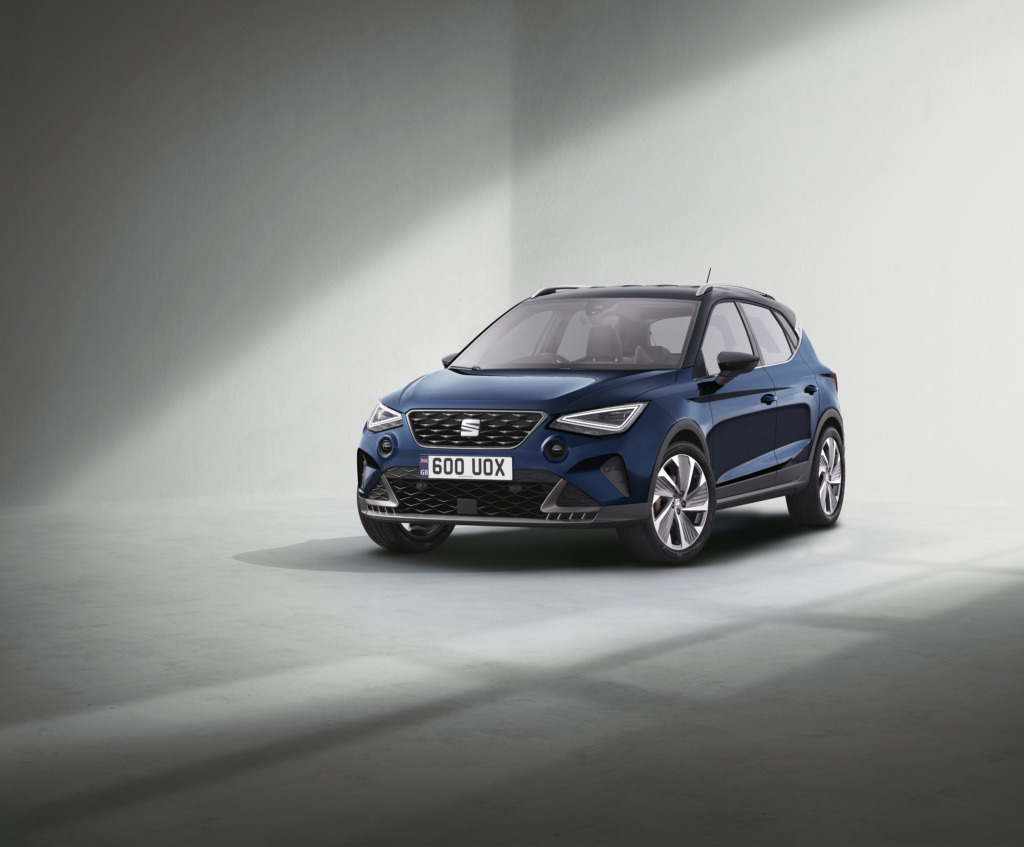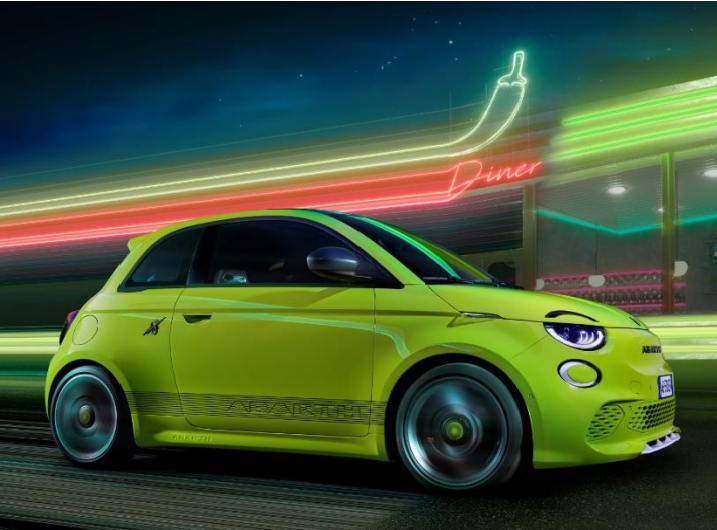The SEAT Arona is a small SUV that was launched in 2017 with an important role to play in the Spanish maker’s model line-up. Sophisticated underpinnings made possible a more spacious cabin and a more engaging driving experience than most rivals could offer and across the range, this car offered a sense of style that its fashionable clientele liked. Here, we look at the early versions of this MK1 model from a used buyer’s perspective.
The History of the SEAT Arona
Every volume brand seems to have its own idea of what a small supermini-based SUV should be. Some are stylish, some are practical and some are overtly SUV-like. But wouldn’t it be great if all of these attributes could be found in one more complete product in this segment? SEAT’s take on this class of car, this Arona model, claimed to deliver just that.
The Crossover SUV market sector has massively expanded in recent times. By 2017 when this car was launched, it was four times the size it had been as recently as 2015, accounting for one in every three new car sales, with ‘B’-segment supermini-based models like this one leading the charge. By this point, SEAT had already had great success with the slightly larger ‘C’-segment family hatchback-based Ateca model it launched in 2016 to target the ‘Qashqai-class’ part of this market. The Arona aimed to more affordably replicate that car’s success.
As you would expect, it was based on the Barcelona brand’s Ibiza supermini, which means that it also shared that car’s sophisticated MQB A0 platform – making it the first ‘B’-segment Volkswagen Group SUV to get it. That’s important because it left the Arona lighter and potentially more efficient than many of its rivals. Plus in the arguably more important areas that potential buyers in this segment tend to prioritise: practicality, media connectivity and scope for personalisation, the Arona makes a strong case for itself on paper. But what will the reality of buying and owning a used one be like? That’s what we’re here to find out. An updated version of this MK1 model made its debut in the early Summer of 2021.
The Cost of a SEAT Arona
Aronas from this era are pretty affordable. The base 1.0 TSI petrol model starts from around £10,950 (around £13,100 retail) in ‘SE’-spec on a ’17-plate, with values rising to around £13,750 (around £15,850 retail) for a later 1.0 TSI ‘SE’-spec model on a ’21-plate. If you’d rather have the rare Arona 1.6 TDI diesel, prices for that start from around £11,100 (around £13,250 retail) in base ‘SE’-spec on a ’17-plate, with values rising to around £13,700 (around £15,800) for a later ’20-plate base-spec model. Whichever powerplant you choose, it’s quite likely that you’d ideally want sporty ‘FR’-spec, and if so, you need to allow a premium of around £2,500 over ‘SE’ trim.
Replacement Parts
(approx based on a 2018 Arona 1.0 TSI 95PS ex VAT) An air filter costs around £19-£22 and an oil filter costs around £6-£16. Front brake pads sit in the £21 to £37 bracket for a set (rears £14-£23). Front brake discs cost between £50 to £77 for a pair (rears £36-£127). A wiper blade costs in the £10 to £17 bracket. A radiator will sit in the £140 bracket. A water pump is around £84-£86. If you need replacement parts for your SEAT Arona get in touch here.
Significant features of the SEAT Arona
The Arona, says SEAT, ‘transcends age barriers’. Not sure about that. The truth is that it’s very obviously targeted at the younger folk driving sales in this segment, though there’s also enough boxy practicality here to interest more adventurous small families too. These people will see at a glance that the Arona is a more versatile proposition than the Ibiza supermini it’s based upon, 79mm longer and 99mm taller than that car. From the side, what would otherwise be a rather unremarkable profile is enlivened by two almost arbitrary upper coachwork slashes just below the glass line and plenty of crossover trinketry. Most obviously the contrast-coloured roof. While other makers in this sector have merely dabbled with this concept, SEAT whole-heatedly embraced it, standardising this feature for those wanting it and offering customers orange, black or grey colour options.
And inside? Well if you like the funky attitude of the exterior, you might be a little disappointed to find that little of it has been carried over to the cabin, which is virtually identical to the rather conservative interior you get in an Ibiza, though you do sit a little higher. What’s not up for debate is the quality of what’s provided, something nicely complemented by the classy glass-fronted 8-inch infotainment screen that most models got. As well as the usual Bluetooth and DAB tuner, this incorporates 3D navigation, voice recognition and SEAT’s ‘Full Link’ smartphone-mirroring system.
And in the rear? Well, off hand, we can’t remember ever being in a small car with as much ceiling space as this one. Six foot adults who might normally grumble at the prospect of long distance rear seat confinement in any supermini-based model need have no worries about the prospect of riding here. And luggage space out back? Well the rear hatch opens to reveal 400-litres of luggage space. A dual-height boot floor was standard here. Need more room? Push the backrest forward and 823-litres of space is revealed.
Potential Issues with the SEAT Arona
We came across quite a few very satisfied Arona owners but inevitably, there were a number of issues. SEAT has a reputation for thin paintwork, so look out for stone chips on the body. Otherwise, it’s the usual things with superminis – signs of child damage in the interior, car park exterior dents and scuffs and alloy wheel scratches. Otherwise, just, a usual, insist on a fully stamped-up service history. At Vospers we always conduct a multi-point safety check and whenever possible we will provide you with the cars service history. For more information on how we ensure you are getting the best out of buying a used car from Vospers check out our peace of mind policy here.
The SEAT Arona Driving Experience
By 2017, with its only slightly larger Ateca SUV, SEAT had already shown it could produce a compact Crossover with class-leading standards of ride and handling and if you come to this car in search of a slightly smaller Crossover of that kind, you’ll find that the Arona continues that strong showing. If you happen to be familiar with rivals in the small SUV segment, you may well notice that the steering here is more direct, the corner turn-in’s more precise and that body roll is rather better controlled.
Credit for much of this can be given to the stiff, sophisticated MQB A0 platform this model shares with the fifth generation Ibiza supermini it’s based upon. That’s not to say that it feels in any way really sporty: no car in this segment is. SEAT’s preference has been to set the Arona up for the low speed, traffic-jinking needs of the urban jungle and sure enough, it feels right at home in that environment, with its great all-round sight lines and tight turning circle.
As for engines, well most will choose the likeable 1.0 TSI turbo petrol variant. This three cylinder powerplant is primarily offered in 95PS guise, but there’s also a 115PS variant if you want a little more power, a 6-speed gearbox and the option of DSG auto transmission. Either way, in a 1.0-litre TSI Arona, 57.6mpg is possible on the combined cycle and around 111g/km of CO2 (both NEDC figures). Also pretty frugal is the pokiest option in the line-up, a 150PS four cylinder 1.5 TSI EVO petrol variant which features cylinder deactivation technology. A couple of minority-interest 1.6-litre TDI diesel units developing either 95 or 115PS also made the original team sheet.
Summary
The Arona, according to its maker, is aimed at ‘drivers looking for a sense of excitement, distinction and functionality. People who know that age is just a number, not an outlook on life.’ That’s one way of defining likely customers. Another would simply be to describe them as people in search of a small car with added practicality and an extra sense of fun. All ‘B’-segment Crossovers claim to offer this of course, but this one got closer to delivering it than most of its contemporaries. It’s more spacious than many of them. And it’s better to drive than virtually all of them. SEAT, it turns out, is rather good at making SUVs.
If you are interested in the SEAT Arona enquire now.





